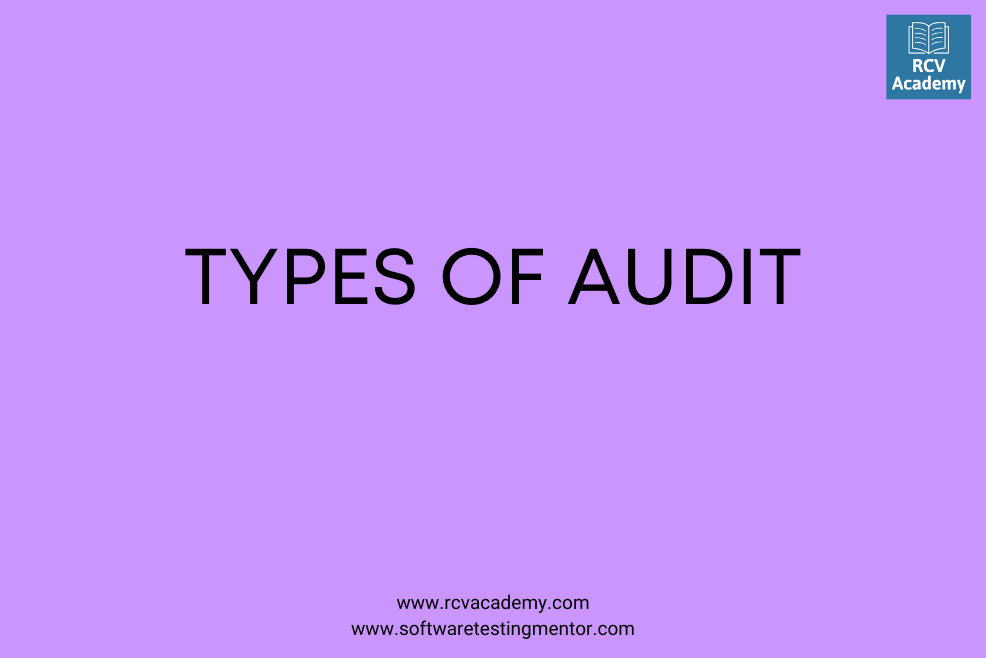In this tutorial, we will learn about types of audit the nature and scope of review due to various factors such as the size of the organization, strength of the internal control system, legal requirements, etc.
The reports and statements can be of any nature like revenue reports, expense reports, management account records, etc. Companies will not receive a rubber stamp certification; this is an in-depth program that requires an exhaustive and thorough audit of one’s processes said by “John Kania.”
The various types of audit are as follows:
- Statutory audit
- Internal audit
- Secretarial audit
- Cost audit
Other forms of an audit are as follows:
- Tax audit
- Bank audit
- Co-operative society audit
- Insurance audit
- Partnership firm audit
- Government audit
- Management audit
- Sole proprietorship audit
- Efficiency audit
- Proprietary audit
STATUTORY AUDIT / FINANCIAL AUDIT:
A statutory audit is often called a financial check. An Independent business review is usually conducted to ascertain whether the balance sheet or profit or loss account presents an accurate and fair view of financial position and a working result of an organization under audit. The financial review is needed because the company’s control is vested in the hands of the management of the company, and the administration also prepares the financial statements.
The owners (shareholders), therefore, need assurance that the financial statements prepared by the management are reliable. The opinion of the auditor an independent expert assures the owners about the reliability of the financial statements. Similarly, investors wish to invest their money in the shares of the companies based on their profitability and financial position. They will also place greater reliance on financial statements if they audited. According to the law:
- The auditor will have access to books of accounts and vouchers, etc., at all times, and he can also seek information from the company’s officers as he may deem necessary.
- If any qualifications in the audit report, the reason for the same must be stated in the story.
- The auditor is required to comply with auditing standards.
- In his story, he must declare, besides other things, whether the financial statements represent an accurate and fair view of the company’s affairs at the end of the fiscal year.
- In case of auditor suspects any fraud, he must immediately report to the Central Government.
Internal Audit:
As may be prescribed, certain classes of the society shall appoint an internal auditor who will company and make a report thereon to the board of directors. The jury may decide any Chartered Accountant (except statutory auditor of the company) or cost account or other professional, can be appointed to conduct an internal audit.
Secretarial Audit:
In a compliance audit and part of total compliance management in an organization. The secretarial audit is a useful instrument for corporate compliance management. It helps to detect non-compliance and to take corrective measures. It is a process to check compliance with provisions of various laws and rules or regulations, procedures, maintenance of books, records, etc. by an independent professional to ensure that the company has complied with the legal and procedural requirements and also followed the due processes.
The ever-increasing complexity of laws and responsibilities of directors make it imperative that a practicing Company Secretary report whether or not there exist proper compliance mechanism and systems in the corporate structure. PCS has also to verify whether diverse requirements under applicable laws have been duly complied with or not and if there is a need for any corrective measures or improvement in the system.
Secretarial audit continuously would help the company initiate corrective actions and strengthen compliance mechanisms and processes. It is recommended that the secretarial audit be carried out periodically, and adverse findings, if any, be communicated to the board for corrective action. There is a multiplicity of rules or laws or compliance management systems to ensure compliance of laws applicable to the company.
It has a two-fold objective:
- To protect the interest of the stakeholders.
- To avoid any legal action against the company and its management.
As of now, the secretarial audit is not mandatory for companies. However, it is optionally undertaken by the companies for maintaining good Corporate Governance practices.
Cost Audit:
The growth and development of a cost accounting system made it necessary to maintain cost records and cost books to record cost and the related transactions correctly. An essential either in financial accounting, cost accounting, management accounting system, wherever books and records are kept, must be examined independently to ensure that they have been saved and recorded fairly and collectively and that there are no errors of omission and commission no defalcation.

